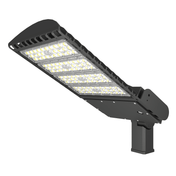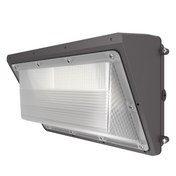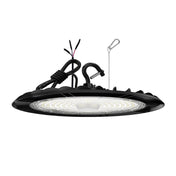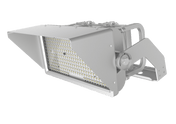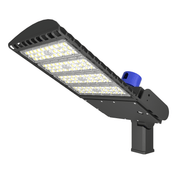Introduction: Why Warehouse LED High Bay Selection Matters
Warehouses are the backbone of supply chains, and lighting is their unsung hero. Poorly chosen lighting leads to reduced productivity, increased accident risks, and sky-high energy bills. Traditional warehouse lighting like metal halide often fails here—flickering, dimming over time, and guzzling electricity. LED high bay lights are the solution, but not all LEDs are created equal for warehouse use. A 10,000-square-foot warehouse has different needs than a cold-storage facility or a high-rack distribution center. The key is to select fixtures tailored to your warehouse’s unique layout, tasks, and challenges. This guide breaks down the process into simple, actionable steps to ensure you get the right LED high bays for your space.
Step 1: Analyze Your Warehouse’s Layout & Lighting Needs
Before browsing fixtures, map your warehouse’s key features—they’ll dictate your lighting requirements:
-
Ceiling Height: Warehouses typically have ceilings 15-40ft high. For 15-25ft ceilings, 100-150W LED high bays work best. For 25-40ft ceilings, opt for 150-250W fixtures—higher wattage ensures light reaches the floor without dimming. Avoid underpowered lights; they’ll create dark zones between fixtures.
-
Space Layout: Open floor plans (e.g., bulk storage) need 360-degree light distribution (UFO LED high bays). Narrow aisles with high racks require linear LED high bays—their long, focused beams target aisle floors without wasting light on rack tops. For mixed layouts (open + aisles), combine both types for balanced coverage.
-
Task Requirements: If your warehouse involves detailed tasks (e.g., order picking, inventory labeling), prioritize higher brightness and color accuracy. For bulk storage with minimal human activity, you can balance brightness and cost. Cold-storage warehouses need fixtures rated for low temperatures (-20°C or lower) to avoid performance issues.
Step 2: Focus on the Right Technical Specs (Not Just Watts)
-
Lumens: Measure Brightness, Not Power:Watts tell you energy use, but lumens measure how much light the fixture produces. For warehouses, aim for 50-100 lumens per square foot. For example, a 20,000 sq ft warehouse needs 1-2 million total lumens. A 150W LED high bay outputs ~20,000 lumens, so you’d need 50-100 fixtures (adjust based on ceiling height).
-
Color Temperature (CCT): Balance Alertness & Comfort:Warehouses thrive with 5000K-6000K (cool white) light. This temperature mimics natural daylight, boosting worker alertness and reducing eye strain during long shifts. Avoid warm white (3000K-4000K)—it can make spaces feel dim and cause fatigue in industrial settings.
-
Color Rendering Index (CRI): See Colors Accurately:A CRI of 80+ is non-negotiable for warehouses. High CRI ensures labels, packaging colors, and product details are visible—critical for order accuracy and quality checks. A low CRI (below 70) can make reds look brown or blues look gray, leading to costly mistakes.
-
IP Rating: Survive Warehouse Conditions:Warehouses are dusty, and some handle moisture (e.g., cold storage with condensation). Choose fixtures with IP65 or higher. IP65 means dust-tight and resistant to low-pressure water jets (ideal for general warehouses). For wet areas (e.g., food-grade warehouses), go for IP67 (waterproof up to 1m depth).
Step 3: Choose the Best Mounting & Control Options
Mounting and controls impact both installation ease and energy efficiency:
-
Mounting Types:Suspension mounting (via chains or cables) is best for high ceilings—it lets you adjust fixture height to optimize light distribution. Surface mounting works for lower ceilings (15-20ft) but limits adjustability. For warehouses with exposed beams, beam clamps are a quick, secure option.
-
Smart Controls:Maximize energy savings with controls tailored to warehouse operations: Motion Sensors:Install in low-traffic zones (e.g., back storage areas) to turn lights off when no activity is detected—saves 30-40% on energy.
-
Daylight Harvesting:Pair with skylights to dim lights when natural light is abundant. Great for warehouses with roof windows.
-
Dimming Systems:Adjust brightness based on shift times (e.g., dim to 50% during night shifts with fewer workers).
Step 4: Prioritize Durability & Long-Term Cost Savings
Warehouse lighting is an investment—focus on long-term value, not just upfront cost:
-
Build Quality:Look for fixtures with die-cast aluminum housings—they’re corrosion-resistant and stand up to warehouse vibrations (e.g., from forklifts). Avoid plastic housings; they crack easily under heavy use.
-
Heat Dissipation:LEDs fail faster in heat. Choose fixtures with integrated heat sinks or cooling fans—they keep the LED chip cool, extending lifespan to 50,000+ hours. A well-cooled fixture lasts 2-3x longer than one with poor散热.
-
Warranty:Opt for brands with 5-10 year warranties. This covers driver failures or dimming issues—common problems in low-quality fixtures. A 1-year warranty is a red flag; it means the manufacturer cuts corners.
-
ROI Calculation:Compare upfront cost to energy savings. A $180 150W LED high bay replaces a $60 400W metal halide. At $0.15/kWh, the LED saves ~$72/year per fixture. It pays for itself in 1.6 years, then saves $72/year for the next 8+ years.
Step 5: Avoid Common Warehouse Lighting Mistakes
Steer clear of these pitfalls that plague many warehouse owners:
-
Overlooking Fixture Spacing:Hang fixtures too far apart, and you’ll get dark spots. Too close, and you’ll waste energy. Follow the 1.5-2x rule: space fixtures 1.5-2x the ceiling height apart (e.g., 20ft ceilings = 30-40ft between fixtures).
-
Ignoring Cold Storage Needs:Standard LEDs struggle in temperatures below 0°C. Choose cold-rated LEDs for freezers—they start instantly and maintain brightness in sub-zero conditions.
-
Buying Cheap, Unbranded Fixtures:Off-brand LEDs often use low-quality chips and drivers. They dim within a year and fail in 2-3 years, costing more in replacements than a quality fixture.
Conclusion: Select for Your Warehouse’s Unique Needs
Choosing the right LED high bay for your warehouse isn’t about picking the brightest or cheapest fixture—it’s about matching specs to your space’s layout, tasks, and conditions. By analyzing your ceiling height, prioritizing lumens over watts, investing in smart controls, and choosing durable, warrantied fixtures, you’ll get lighting that boosts productivity, cuts costs, and lasts for decades. Remember: the best LED high bay is the one that fits your warehouse. Take the time to assess your needs, compare options, and don’t hesitate to ask suppliers for customized recommendations—your workers, your bottom line, and your supply chain will benefit.




